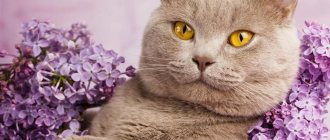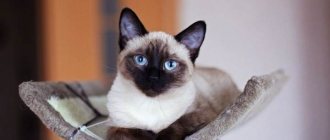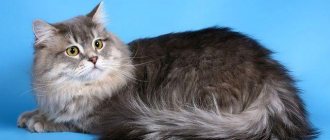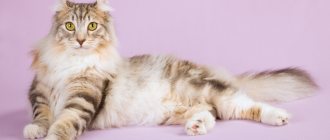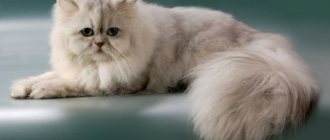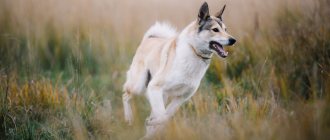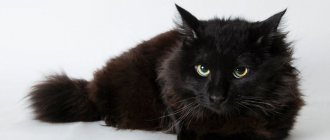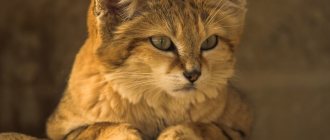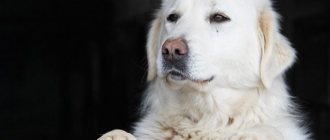The Siberian Neva Masquerade cat is an aristocrat with refined manners, which combines the best qualities such as tenderness, devotion and sociability. Behind the luxurious appearance and apparent sedateness lies a dexterous and fearless hunter, capable of repelling an offender. The Neva cat is demanding of care. Before getting a pet, you should read the recommendations of experienced breeders regarding its maintenance.
Brief history of the breed
This breed originated in the 80s of the last century. It originates from Siberian cats that lived in Russia for centuries. For the first time, breeders of the Kotofey club in Leningrad began breeding Neva Masquerade cats. The work on creating a new breed was led by Olga Mironova, a well-known felinologist at that time.
There is no exact information about the origin of the point color. It is believed that the dark mask of Siberian masquerade cats appeared due to crossing with representatives of the Siamese breed. Some believe that this color was borrowed from color-point Persians.
In 1988, the Neva Masquerade cat took part in an exhibition for the first time, which was held in Leningrad. It was there that the breed got its name, which reflects the place of its origin - this is a city on the Neva. The word “masquerade” perfectly describes the main feature of its appearance - a dark mask on its face. In addition to the official name, the breed has others - carnival cat, nevak.
A little later, Moscow breeders began breeding Siberian Masquerade. However, they preferred to work separately from their Leningrad colleagues. Thanks to this, over time, a wide variety of new colors appeared.
In the early 90s, Russian felinologists began to promote the breed on the international stage. This gave good results - in 1992, the WCF organization registered the Siberian masquerade cat.
Most felinological associations still do not recognize the Neva Masquerade as a separate breed. It is listed in the registers as a color variety of Siberian cats.
Disqualifying Faults
In addition to the reasons common to representatives of all breeds (non-conformity, color falsification, unkempt appearance, signs of disease, the presence of parasites, aggressiveness, oligo- and polydactyly, cryptorchidism in cats, tail defects)
The grounds for disqualifying a Siberian cat are:
- pronounced signs of the Persian type;
- deafness of cats and white cats (according to the rules of European rings);
- umbilical and inguinal hernias (Neva masquerade hernias are susceptible to their occurrence).
This is interesting! However, situations where Siberian cats are deprived of an exhibition rating are quite rare: high standard qualities and good health are signs reinforced by the professional, serious work of Russian felinologists.
Return to content
Description of the breed
Siberian masquerade cats are very large, by cat standards, animals with long hair and sky blue eyes. The weight of a male can reach 8-10 kg. The weight of more graceful females varies between 5–6 kg.
The Neva cat got its name in honor of its place of origin - the city on the Neva
Exterior characteristics
Representatives of this breed have strong bones and powerful muscles. The WCF standard provides the following characteristics:
- Proportional physique. The body is of medium length. The chest is well developed, the neck is massive.
- The head is quite large in the shape of a trapezoid with smooth outlines. The frontal part is wide, but low. When moving from the forehead to the bridge of the nose, a small depression is barely visible.
- A wide nose of medium length with a neat nose.
- The low-set cheekbones are clearly defined, the cheeks are slightly plump, and the well-developed jaws have a regular structure.
- A strong and wide chin is in line with the nose.
- The ears are medium in size with pointed tips and a fairly wide base, slightly tilted forward. The distance between them should exceed the width of the bottom of the ear. The breed standard does not have strict requirements for the presence of tassels on the tips, but their presence is desirable.
- The eyes are round, large, widely spaced, the outer corners are slightly raised. The iris is colored a rich blue. Cats up to one year old are allowed to have a greenish tint to their eyes.
- The limbs are strong, well muscled, of medium length with rounded powerful paws. Hair grows abundantly between the toes.
- The tail is of moderate length - in most cats it reaches the area of the shoulder blades. The base is wide, the tip is rounded.
Coat type
The Siberian Neva Masquerade cat has thick, semi-long hair. The neck and chest of the animal are decorated with a luxurious collar. There are “pants” on the hind legs. The structure of the wool is dense. Under the guard hairs there is an undercoat, which grows in winter and becomes short with the arrival of warmth.
The cover is smooth to the touch, and shines glossy in the sun. The Nevak's coat lengthens from the shoulder blades to the croup and lies on the sides and base of the tail. It has water-repellent properties and protects well from the cold.
Acceptable colors
The Siberian masquerade cat standard provides for many variations of the Siamese color. The main color of the coat is light, and the coat on the paws, tail and ears is darker.
Table – Colors of the Neva Masquerade cat
| Name of colors | Point color | Nose | Paw pads |
| Seal point (classic) | Dark brown | Dark brown | Dark brown |
| Blue Point | Gray-blue | Gray-blue | Gray-blue |
| Red point | Reddish, orange | From light pink to coral | From light pink to coral |
| Cream point | Beige, cream | Pink, coral | Pink, coral |
| Seal-torty-point. There are dark highlights on the face that resemble flames | Dark brown and red spots on points | Brown | Brown or pink |
| Blue cake point. Flame-shaped highlights on the face | Blue and cream spots on points | Pink, blue-gray | Pink, blue-gray or blue-gray with pink spots |
The tabby point color is very popular, in which the mask can be brown, cream, blue and even tortoiseshell. The letter M is clearly visible on the forehead of such cats, and faint stripes are present on the face, paws and tail. The nose corresponds to the color type and has a dark edging. Tabby point color varieties:
- seal tabby point;
- blue tabby point;
- red tabby point;
- tortie tabby point.
More recently, Siberian masquerade cats with silver, golden and smoky color-point colors have been bred, but they are very rare.
Neva Masquerade with a rare golden color
Breed defects
The disadvantages of the breed include:
- thin bones, underdeveloped muscles;
- angular head shape;
- long neck and limbs;
- ears that are too large or small;
- almond-shaped or small eye size;
- short tail with little hair, and also with a pointed tip;
- lack of shine on the coat;
- poorly or overdeveloped undercoat.
Classification
The tabby color is characterized by the presence of thin lines on the muzzle that outline the eyes and create the appearance of the letter M in the forehead area. This coloring of the coat was present even in wild cat ancestors. This coat color perfectly camouflaged the animal against the background of earth and grass.
The second name for the color is wild, since small predators in nature most often have a striped pattern on their fur.
There are several types of such staining. The most common ones include “mackerel” or “tiger”. Subspecies:
- Mackerel – resembles the color of tiger fur. On the fur coat of pets you can see a pattern consisting of vertical lines located parallel to each other.
- Spotted – characterized by the presence of small spots located randomly over the entire surface of the animal. The spots may be elongated, resembling broken lines (dotted line, dash-dotted line).
- Marble – the stripes on the sides of the pet resemble the stains inherent in marble. Three parallel stripes stretch along the spine. The fur on the belly and cheeks has slight spotting, and the limbs and tail are decorated with ring stripes. Marble color is sometimes called classic.
- Ticked color differs from other tabbies in that there are no stripes or spots on the body of the furry pet, but on the face there is a faintly visible letter M. A residual pattern characteristic of tabby colors is visible in the chest area and on the limbs. Ticking is a special hair color formed by alternating black and yellow pigments. If a pet has a dominant Agouti gene in its genotype, then the animal has a ticked coloration. One example of a ticked tabby color is the Abyssinian cat.
Striped colors are the most common in cats. It is believed that all cats are genetically tabby, but not all pets are agouti, which is reflected in the color of their coat. The ability to show a striped pattern is given by the dominant Agouti gene. If the gene is in a homozygous state, then the cat's coat will have a uniform color.
The Agouti gene does not affect pigmentation; it is responsible for the distribution of pigment in the hair. That is, the color of the pigment (black, red, chocolate, etc.) depends on other genes that determine the color of the animal.
The presence of the Agouti gene leads to the appearance of pigment rings in the hairs of the coat of the same color as the main color of the animal. The hairs turn out to be darker at the ends and lighter at the roots. This color subtype is called ticked.
Character and habits
The Siberian masquerade cat seems stern in appearance, but appearances are deceiving. Those who have already had experience keeping these animals speak of them as gentle, devoted and loving pets. They amazingly combine nobility, calmness and the ability to stand up for themselves.
They fearlessly defend their territory and hunt well, despite the fact that they sometimes seem phlegmatic. However, this does not prevent them from showing patience with children. The Siberian masquerade is not capable of offending a child. Feeling tired from the baby’s excessive attention, she will prefer to go to another room.
The pet is equally attached to all family members, willingly accepts affection, but never imposes its company. Behaves cautiously with strangers. When there are a lot of guests at home, the cat usually goes to a quieter place. The animal knows how to sense a person’s mood and often comes to the rescue when the owner is depressed. The pet rarely gives voice, unless very hungry. He can “keep up the conversation” by responding to the owner’s affectionate remarks.
Siberian masquerade cats can get along with dogs, and in rare cases, with other cats, if they do not claim dominance. Pets raised together perceive each other calmly. What the Nevak will not be able to make friends with is small rodents and birds due to its highly developed hunting instinct.
The hunting instinct does not allow nevaks to live in the same apartment with domestic rodents and birds
Savannah
A relatively new breed that was recognized by the Cat Fanciers' Association in 2012, the Savannah is known for its unusual appearance. Large, tall ears are located on the top of the head. The savanna is also characterized by a long neck, long legs and a short, thick tail. In addition, these cats have exotic spotted and striped coats. And this is not surprising, the wild appearance of the savannah was achieved by crossing the African serval with a domestic cat.
Health and life expectancy
Siberian masquerade cats live about 13–15 years. Those with a stable immune system rarely get sick. If you provide your pet with adequate nutrition and properly care for it, its life expectancy can increase by another 3-5 years.
The only disease that is more common in Neva masquerade cats is hypertrophic cardiomyopathy. This is a pathology in which the walls of the left ventricle thicken, resulting in heart failure.
Important! The danger lies in the fact that cardiomyopathy does not manifest itself for a long time. The disease gradually progresses and can lead to sudden death.
Difficulties in breeding tabby cats
When breeding tabby cats, difficulties arise if you do not know what dominant and recessive genes are and how they are passed on to future offspring. By their nature, all cats are initially tabbies, since the T (tabby) gene is present in their genetic code, although the pattern does not always appear.
Color genetics:
- The color of the skin and the appearance of ornaments on it are influenced by the agouti gene (A). It has the ability to color hairs in different shades. The shade lies in transverse lines alternating from light to dark.
- If the agouti gene is dominant (AA), the dark stripes on the hairs are colored more densely, and the light areas receive less coloring pigment. This way the contrast of the tabby pattern becomes brighter and more noticeable.
- Cats with solid coats have the recessive (aa) agouti gene. The hair is dyed evenly and equally along its entire length, because this is how the pigment is distributed. It follows from this that agouti only deals with the distribution of color along the hair and does not affect the amount of pigment.
- What shade the fur and eyes will be depends on the saturation of the coloring pigment, for which the melanin gene is responsible.
Content recommendations
The Siberian Masquerade cat has a luxurious coat and therefore needs careful care. It is also necessary to keep the ears, eyes and mouth clean. A cat's health directly depends on the quality of its diet.
Grooming
The cat owner will have to pay attention to grooming, especially during seasonal shedding. It needs to be brushed 3-4 times a week using a massage brush and a furminator. If this is not done, the undercoat will become tangled.
You can wash your pet, but he is unlikely to like this procedure. Thick fur is difficult to get wet and difficult to rinse out after using shampoo. For this reason, the cat is rarely bathed - 2-4 times a year. To keep the cover smooth and shiny, it is advisable to use conditioner.
The Neva Masquerade should be brushed at least three times a week.
Hygiene of eyes, ears and teeth
Ears are examined once every two weeks. Excess sulfur is carefully removed with a cotton pad soaked in a special lotion. Eyes are wiped daily with clean sponges. The claws are trimmed 2 times a month by 1–1.5 mm. It is convenient to use not ordinary scissors, but a nail clipper.
Particular attention is paid to the oral cavity. Veterinarians recommend cleaning your pet's teeth of plaque every week. To do this you will need animal paste and a baby brush. In the absence of one, you can simply wrap a bandage around your finger and carefully treat your teeth. To prevent the formation of tartar, the cat is given dental treats.
Features of feeding
Siberian masquerade cats are large, so they need more food than their other relatives. However, here you need to find a middle ground so as not to overfeed your pet, otherwise he will gain excess weight.
Veterinarians advise switching your cat to super-premium or holistic dry food from childhood. They are properly balanced and easy to dose. Adult animals are fed in the morning and evening. Kittens should receive food more often - from 3 to 5 times a day, depending on their age.
Some cat owners prefer to create their own diet from natural products. It is based on lean meat - rabbit, veal, poultry fillet. Among the cereals, buckwheat, rice, and oatmeal are allowed. Many cats are not averse to eating vegetables - carrots, cucumbers. Animals benefit from fermented milk products - low-fat cottage cheese, kefir, classic yogurt.
Your pet should not be given:
- potatoes;
- tomatoes;
- sweets;
- semi-finished products;
- canned food for people;
- salty, fried and fatty foods;
- snacks;
- milk.
It is important not to overfeed your pet, otherwise he will quickly gain excess weight.
Nutrition
The diet of a domestic predator should be varied, it includes meat and lactic acid products, vegetables, and vitamin supplements. Unable to tolerate a monotonous diet due to their being natural hunters, tiger individuals consume only fresh, nutritious food. Long-haired cats that undergo seasonal shedding require additional care. Frequent bathing is not particularly recommended; animals clean their own fur.
Striped felines have become so close to humans that life without them becomes boring and uninteresting. But it’s not always worth “chasing” a breed. Any stray cat can turn into a gorgeous, handsome cat, feeling the care and affection of its owner.
How to choose a kitten and how much does it cost?
It is better to buy an animal from professional breeders. In this case, the new owner will receive documents for the pet - pedigree, veterinary passport, contract. Kittens of the Siberian Masquerade breed are born completely white; points on the coat appear later. Babies are taken from the nursery at three months of age after vaccination.
When buying a kitten, you should make sure that it is healthy. An animal that feels good has a neat, shiny coat, clean eyes and ears. The pet is moderately well-fed, active and good at contact. Characteristic signs of illness are as follows:
- lethargy, depression;
- scratches and bald spots on the body;
- discharge from the eyes and nose;
- dark wax in the ears;
- dirty under the tail;
- unkempt, disheveled fur.
The cost of kittens depends on belonging to a certain class. The most expensive individuals are those that have every chance of participating in exhibitions in the future. These are show-class animals, prices for them start from 35,000 rubles. Kittens with minor defects, but suitable for breeding, cost less - 15,000–25,000. The most inexpensive animals belong to the pet class, these are cats intended only for home keeping. Their estimated cost is 10,000–15,000 rubles.
There are usually 3-4 kittens in a Neva Masquerade litter
All kinds of combinations
Spotting or striping may be presented in combination with a solid color. Monochromatic color is usually observed on socks or knee socks, spots on the chest, and stomach. Sometimes the tabby color spreads to the area of the paws, chest, neck, muzzle, and the rest of the coat is monochromatic.
Varieties and their descriptions
The most popular combinations are:
- blue tabby, with a gray or blue pattern on the main light background;
- tabby brown can be seen in the example of the British; cats have a black pattern on a chocolate background;
- Using the example of a Thai cat, you can get acquainted with the unusual seal tabby point color. Cream pets have stripes on the face, tail and paws, as well as light brown points;
- red-silver tabby suggests a base creamy-silver coat color and a reddish pattern on it;
- British kittens with silver fur may have a black tabby pattern;
- silver in combination with gray can also be observed in British cats. Tabby coloring involves a darker pattern on a light background.
Pros and cons of the breed
The Siberian Masquerade cat is highly valued for its many advantages:
- beautiful appearance;
- balanced character;
- devotion;
- tolerance towards children;
- undemanding to the food supply;
- strong immunity.
The disadvantages of the breed include:
- complex grooming;
- the cat’s reluctance to share its territory with other animals.
This breed has many more advantages than disadvantages. The same is confirmed by reviews from owners. The Siberian masquerade cat is an ideal companion with a noble disposition and magnificent appearance, not demanding in terms of living conditions.
Pixie bob
To develop a breed of cat that resembles a lynx, breeders used short-tailed forest cats. These animals live in the forests of North America. The first cat obtained in this way was named Pixie, which means “Elf” or “Fairy” in English.
The animals are distinguished by a short tail, tufts on the ears and whiskers are possible. Pixies are unpretentious, train well and easily make contact with people.
Interesting photo
Calm grace
Yes, it's a tiger, just a small one
After games you need to rest
Before the jump
Handsome Toyger on a green background
